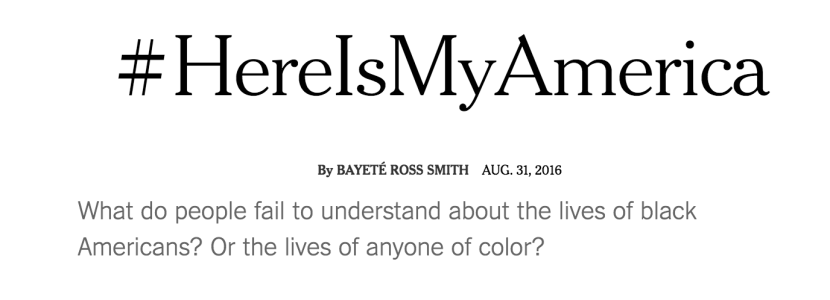The Eternal Negligence of the Mainstream Media: “The World Is Not White”

Somewhere among Urban Legend and the sort of fine-detail scholarly bickering that people outside of academia find tedious lies the truth about how many words Eskimo have for “snow.”
What is compelling about Eskimo words for “snow,” I think, is the idea that a people would become increasingly nuanced in proportion to how much something dominated their environment: Eskimo are so daily confronted with snow and the challenges of snow that they have a hundred words for all the ways it pervades their lives and world.
Conversely, in the very human effort to understand our world and human nature, one of our cliches includes a truism (speculative and mostly metaphorical) about fish being completely unaware of water since it is both ever-present and essential for their existence.
So when it comes to so-called mainstream culture in the U.S., we are, regretfully, fish and not Eskimo.
And the daily record of that obliviousness is recorded by the mainstream media.

Rapinoe, a World Cup and gold-medal winner with the U.S. women’s national team, becomes the first nonblack professional athlete to join in protesting during the national anthem since Kaepernick gained notoriety for sitting out the anthem in 49ers preseason games.
I could make this a quiz, but it would be one most people would fail for the exact reason I included both examples.
The word that shall not be spoken in the U.S. is “white.”
The New York Times editors apparently believe black people are not people, but they certainly cannot cross the line and confront that it is white people who “fail to understand”—or better yet, refuse to understand—”the lives of black Americans.”
And, really ESPN? Megan Rapinoe is “nonblack”?
And if we dig beneath the “rigid refusal to look at ourselves” (read: white Americans) we are able to unmask that when politicians or the media admit the U.S. continues to have a “race” problem, that is the whitewashed code for a “racism” problem—yet the other word that dare not be uttered.
In an interview from 1984, Julius Lester asked James Baldwin about “the task facing black writers,” and Baldwin replied:
This may sound strange, but I would say to make the question of color obsolete….Well, you ask me a reckless question, I’ll give you a reckless answer—by realizing first of all that the world is not white. And by realizing that the real terror that engulfs the white world now is visceral terror. I can’t prove this, but I know it. It’s the terror of being described by those they’ve been describing for so long. And that will make the concept of color obsolete.
Baldwin’s confrontation of the power of normalizing white as that marginalizes black in the U.S. is portrayed brilliantly in a scene from Ralph Ellison’s (1952) Invisible Man where the unnamed main character finds himself in a hellish nightmare after being kicked out of college and sent on a cruel quest for work in The Eternal Negligence of the Mainstream Media: “The World Is Not White” | the becoming radical:
